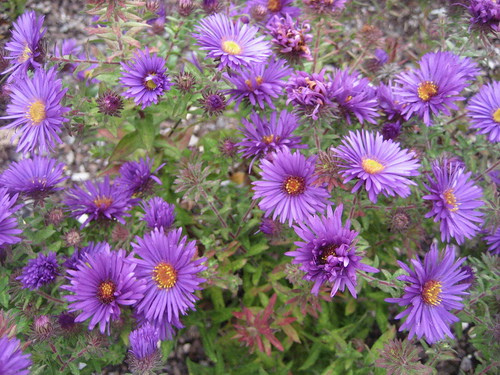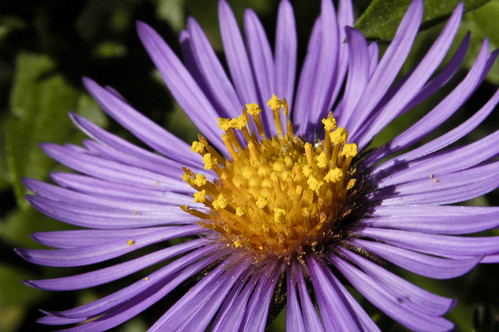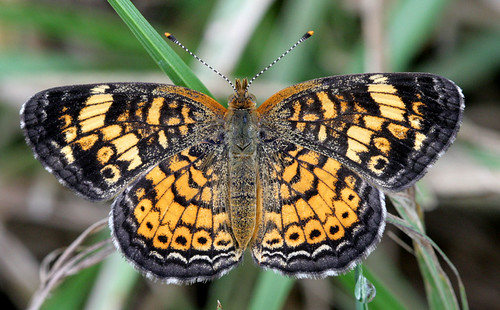 Asters are star-like flowers that bloom in late summer and fall. In the middle of each flower, if you look closely, you will see that the center is actually made up of numerous small flowers, each with its own reproductive parts. Thus, asters are part of the large family of wildflowers known as composites. The many "rays" around the outside of each flower are actually mini-flowers, as well. These rays may or may not have reproductive parts, depending on the species of flower; their main purpose is to draw in the pollinators. And as a side effect, they catch our attention, too.
Asters are star-like flowers that bloom in late summer and fall. In the middle of each flower, if you look closely, you will see that the center is actually made up of numerous small flowers, each with its own reproductive parts. Thus, asters are part of the large family of wildflowers known as composites. The many "rays" around the outside of each flower are actually mini-flowers, as well. These rays may or may not have reproductive parts, depending on the species of flower; their main purpose is to draw in the pollinators. And as a side effect, they catch our attention, too. New England aster is perhaps the showiest of the dozens of native asters in this area. It has bright purple flowers with yellow centers, and it grows at least three feet high -- sometimes as high as six feet. Each flower is about an inch across, and each plant can make dozens of flowers.
New England aster is perhaps the showiest of the dozens of native asters in this area. It has bright purple flowers with yellow centers, and it grows at least three feet high -- sometimes as high as six feet. Each flower is about an inch across, and each plant can make dozens of flowers. This plant is not only beautiful, but also very useful for wildlife.The pearl crescent butterfly uses New England aster as its host plant, feeding on the foliage. The flowers provide late-season nectar to a wide variety of pollinators. And the seeds are eaten by finches and other birds.
This plant is not only beautiful, but also very useful for wildlife.The pearl crescent butterfly uses New England aster as its host plant, feeding on the foliage. The flowers provide late-season nectar to a wide variety of pollinators. And the seeds are eaten by finches and other birds. In the 1990s, DNA testing determined that all of the similar-looking "asters" actually are not as closely related as everyone had thought. Only one of the over 150 species that we call aster in North America is still in the genus Aster, which is mostly made of European species. The rest of our "asters" were split into several genera in 1994. And so, New England aster, which was once Aster novae-angliae, is now Symphyotrichum novae-angliae. Say that ten times fast. Or, forget about saying it and just enjoy the flowers.
 In the wild: New England aster requires a fair amount of sun. Look in power line cuts, in meadows, and by ponds. Try the power line cut through Cabin John Regional Park, the meadow at the Arboretum, the ponds at Meadowside Nature Center and Wheaton Regional Park, and Lake Artemesia.
In the wild: New England aster requires a fair amount of sun. Look in power line cuts, in meadows, and by ponds. Try the power line cut through Cabin John Regional Park, the meadow at the Arboretum, the ponds at Meadowside Nature Center and Wheaton Regional Park, and Lake Artemesia. In your yard: New England aster can be a great addition to a flower garden, because not much else is blooming right now. In fact, Jack Sanders
Like the photos in this post? Mouse over for credits; a click takes you to the photographer on Flickr.


